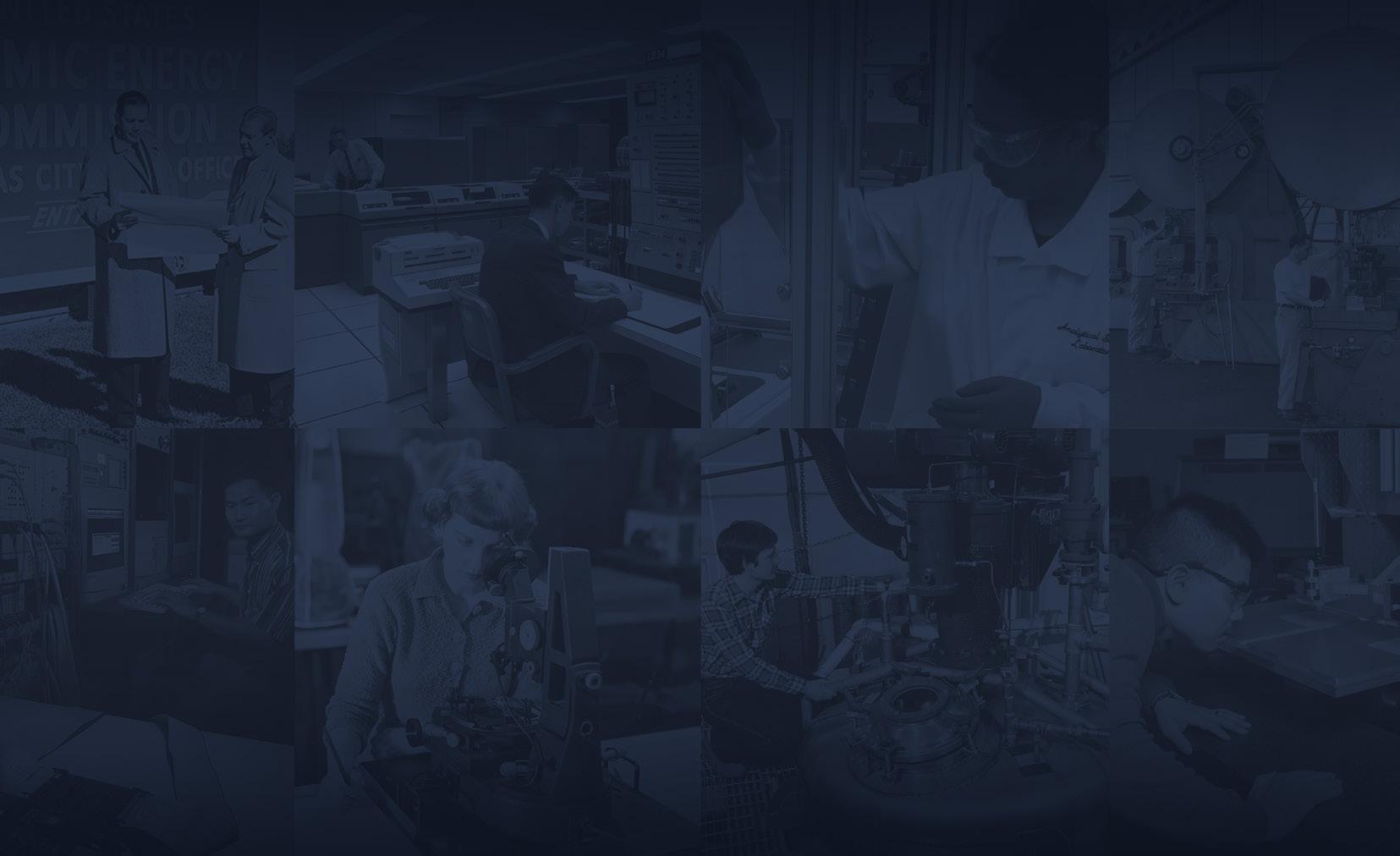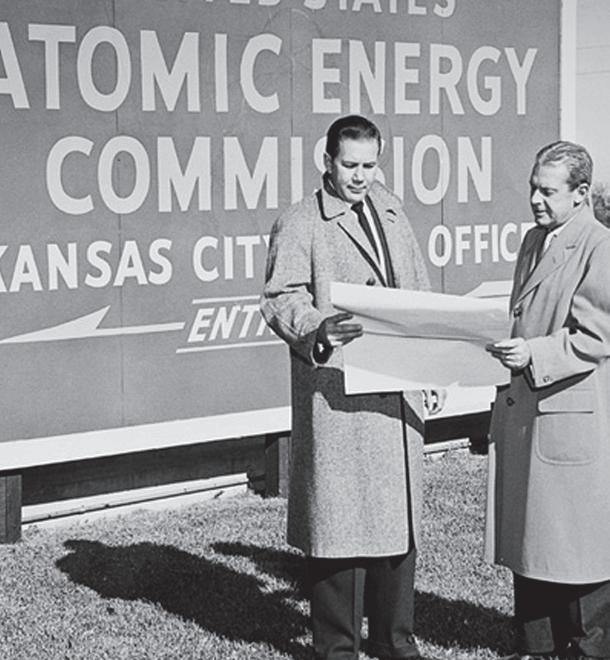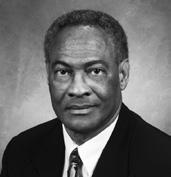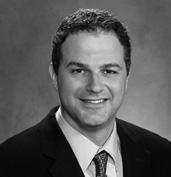KANSAS CITY

75 YEARS OF EXCELLENCE
A Hidden Gem in National Security
1949 2024





A Hidden Gem in National Security
1949 2024






Nestled in the heart of the America, Kansas City, Missouri, is recognized by fans of art and entertainment for its barbeque, jazz, fountains and sports. However, many may not know that it's also home to a discreet, yet integral, part of our nation’s security — the Kansas City National Security Campus (KCNSC.)



Our story began Feb. 14, 1949, when the Kansas City Division became a reality after the Bendix Corporation (now Honeywell International) was selected by the Atomic Energy Commission (AEC) (now the National Nuclear Security Administration [NNSA]) to perform “ ... certain operations, the exact details of which are classified.” Two months later machines were operational, and in three short days our first part was produced: an ordinary machined bushing.
This simple part was just the beginning of the highly sophisticated and complex components that would be built in what’s known today as the KCNSC. The employees were so committed to the confidentiality of the classified operations that for years, most people in the community thought the company made washing machines.


Today, we are a premier manufacturing center where our more than 7,000 employees assemble, inspect and scientifically test 80% of the non-nuclear components that go into the U.S. nuclear stockpile.
We have incorporated some of the latest technologies and proven best practices in advanced manufacturing – from development to production – to build our components faster while maintaining our rigorous safety and quality standards.
Our success at the KCNSC would not be possible without the hard-working Americans who support our national security mission. Their teamwork, integrity and respect, combined with ingenuity and a continuous improvement mindset, help ensure all work at the KCNSC is done with finite precision and the highest standards of excellence. For 75 incredible years, we have delivered on our mission to keep the country safe and secure.


We are one of the only companies in the world that does what we do. We’re proud to support the U.S. and our allies and will do so for generations to come.
KCNSC: a hidden gem in national security.

LONG BEFORE THE KANSAS CITY DIVISION OCCUPIED THE SPACE ON BANNISTER ROAD, THE LOCATION WAS HOME TO THE KANSAS CITY SPEEDWAY. THE SPEEDWAY OPENED IN 1922 AND CLOSED TWO YEARS LATER DUE TO THE DANGEROUS CONDITION OF THE WOODEN BOARD TRACK. THE TRACK’S LOCATION IN THE BLUE RIVER VALLEY WAS BLAMED FOR THE DETERIORATION OF THE UNTREATED LUMBER.



WILLARD B. PAINE 1949 - 1957

LOU W. SMITH 1990 - 1995

I.F. RICHARDSON 1957 - 1959

KAREN K. CLEGG 1995 - 2001

ELDRED E. EVANS 1959 - 1966

DAVE DOUGLASS 2001 - 2004

CHRIS GENTILE 2011 - 2016

ROBERT J. QUIRK 1966 - 1980

CAROL BIBB 2004 - 2006

JOHN RICCIARDELLI 2016 - 2020

V.L. RITTER 1980 - 1985

VINCE TRIM 2006 - 2009

ERIC WOLLERMAN 2020 - Present

JACK A. KNUTH 1985 - 1990

TONY BRANCATO 2009 - 2010


JAMES STOWERS 1949 - 1955

ROBERT BULCOCK 1972 - 1980

WESLEY JOHNSON 1955 - 1957

JAMES HICKS 1980 - 1982

STEVE TAYLOR 2004 - 2009

WALTER C. YOUNGS 1957 - 1965

EARL BEAN 1982 - 1994

MARK HOLECEK 2009 - 2020

HENRY NOWAK 1965 - 1970

DAVE GURULE 1995 - 1998

JEFF SHOULTA 2020 - Present

BILLY COLSTON 1970 - 1972

ELIZABETH SELLERS 1999 - 2004

1940 s

The Bendix Plant, Aug. 10, 1949.

In 1942, Harry S. Truman, U.S. Senator from Missouri, was influential in persuading the Navy to build a facility in Kansas City to support national defense. Truman gave the keynote address at the July 4, 1942, groundbreaking ceremony for the Pratt & Whitney Plant, which would build Double Wasp engines during World War II.
Nearly seven years later in 1949, Truman was President when Bendix signed a prime contract to operate the Kansas City Division for the AEC.

Construction on the mammoth Pratt & Whitney plant began in 1942. Hailed as a critical project in the country’s rush to defend world freedom in the European and Pacific war theaters, the construction effort would forever change the nearly 500-acre site of the former Kansas City Speedway.
Situated just outside of what were then the city limits of Kansas City, the plant site was nestled in what one writer described as a “saucer-like valley ... surrounded by a rocky circle of knolls.” Construction on the plant – later to be known as the Bannister Federal Complex – would continue for 18 months. Thousands of men and women were at work in the aircraft engine plant within four months of the project's initiation, and only 10 months passed between groundbreaking and production of the first Pratt-Whitney Double Wasp engines that powered the Navy’s Corsair fighters.






The Pratt & Whitney facility was designed by Albert Kahn, the foremost industrial architect of his time. Early in his career, Kahn made significant contributions to the design of automotive manufacturing facilities. Late in his life, he turned his expertise to the design of facilities like the Pratt & Whitney Plant, which supported the defense industry.
A combination of factors complicated the design and construction of this massive facility from the start. Construction of industrial buildings using the principles of assembly line production was a revolutionary notion in 1942, and steel was in short supply because of the war. All sorts of metals were needed elsewhere to build ships, airplanes and tanks for the nation’s defense.
The building was constructed with a reinforced concrete arched roof. The stresses of the heavy roof were carried by reinforced concrete beams and columns, which rested on plain concrete footings and used a minimum amount of steel. The innovative roof design was coupled with a system of pouring concrete in movable forms, which saved time. The system proved to be simple and effective for the placement of nearly 50 acres of roof.
Every seven days during construction, concrete forms were rolled forward on wheels fitted to rails that ran their full length – 1,000 feet. During that week, the 1,000 feet of reinforced concrete roof construction and the roofsupporting columns were concreted and hardened. With the exception of lighting installations and other inside fixtures, that newly-roofed section of the 2,933,000-square-foot building was then ready for the installation of the machine tools required for mass production of airplane engines.

THE PRATT & WHITNEY PLANT PRODUCED ENGINES TO POWER FIGHTER PLANES FOR THE NAVY FROM 1942 UNTIL THE END OF WORLD WAR II.



A Chance Vought Corsair, powered by a Pratt & Whitney R-2800 Radial engine was hauled down Bannister Road in 1944.

A long line of Double Wasp engines rolls off the assembly line before being packed and crated for shipment to the battlefronts of the world. Each engine is being carefully checked to assure the Double Wasp standard of performance.
– The Wasp Nest, Pratt & Whitney Aircraft, October 1944.


After the war ended, the Pratt & Whitney Plant closed. Westinghouse leased the facility from the U.S. Navy, and the Fairfax Storage Company used part of the building as a warehouse for tires, raw rubber, sugar and lumber. Two years later, in 1949, the Atomic Energy Commission asked the Bendix Corporation to take over part of the facility to begin building components for nuclear weapons.
From the time it was constructed in the 1940s, employees navigated the massive plant with the help of locations marked on posts. According to former Facilities Director Jim Jeffries, the columns were part of the overall building structure and tied the foundations below grade with beams and webs to support the roof and floor loading. “The original building design included the column identification for construction details and waypoint finding,” said Jeffries. A similar waypoint finding system is in place at the plant. Columns in the factory and on the mezzanine are on 40-foot centers; columns in the office area and below the mezzanine are on 20-foot centers due to the weight of additional floors. The posts are marked alphabetically from south to north (after Z, letters resume as doubles, such as AA); and numerically from west to east.
The quest for a nuclear weapon, driven by the fear that Hitler's Germany might invent them first, gave birth to the top-secret engineering and industrial venture known as codename "Manhattan Project" during World War II.
Born out of a small research program in 1939, the Manhattan Project eventually employed more than 130,000 people across 30 sites in the United States, Canada and the United Kingdom. This enormous breakneck effort involving vast resources and the best scientific minds in the world resulted in the development of a working atomic bomb in a little less than three years.
With the detonation of the atomic bombs “Fat Man” and “Little Boy” over Japan in 1945, World War II quickly came to an end in the Pacific theater.


Although the end of World War II was celebrated globally, the commencement didn't ease tension among international powers. Shortly following the armistice, relations between the United States and the Soviet Union began to sour.
President Harry S. Truman established the AEC to control the peacetime development of atomic science and technology. Following the Soviet Union’s blockade of West Berlin in 1948 and its detonation of an atomic device in 1949, President Truman instructed the AEC to expedite development of a thermonuclear weapon.

On Aug. 1, 1946, President
signed the
Energy Act of 1946 establishing the U.S. AEC. Behind




The KCNSC became a reality in February 1949 when the Bendix Corporation quietly announced it had been selected by the AEC to perform “ ... certain operations, the exact details of which are classified.” The employees guarded the nature of the mission so well that, for many years, the community assumed the plant made washing machines.
The first employees were hired in March and were faced with the task of getting the plant ready for its new role.
First on the checklist was to remove tons of sugar and tires being stored at the facility by a former tenant. By April 19, three machines had been wired and were ready for operation.
Three short days later, on April 21, the first part – a machined bushing – was produced.


Guard in factory, Aug. 11, 1949.

Bendix switchboard, Sept. 9, 1949.

Basement, July 13, 1949.